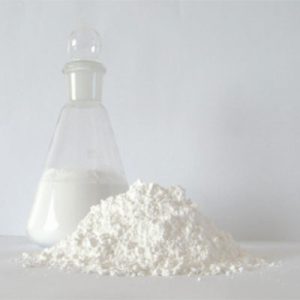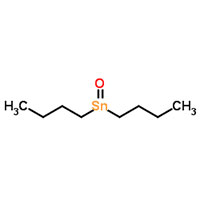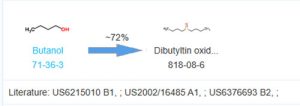Dibutyl Tin Oxide
Specifications
| Item | Index |
| Appearance | White granular powder |
Packing& Storage
| Packing | In 15kg barrel | |||||||
| Storage | 20℃, 2 years. | |||||||
| Shipping | Room temperature in China; may vary elsewhere | |||||||
General Information
1.1 Chemical & Physical Properties
| Common Names | Dibutyltin oxide | Dibutyloxide of tin | Stannane,dibutyloxo | ||||||
| Structure |  |
||||||
| CAS No. | 818-08-6 | Boiling Point (℃) | >300°C | ||||
| Molecular Weight | 248.938 | Melting Point (℃) | ≥300 °C(lit.) | ||||
| Appearance | White granular powder | Vapor Specific Gravity | N/A | ||||
| HS Code | 29310095 | Flash Point (℃) | 81-83°C | ||||
| Solubility | Insoluble in water and general solvents | Autoignition Temperature (℃) | N/A | ||||
1.2 Safety Information
| Safety Phrases | S36/37/39-S45-S24/25 | |
| RIDADR | UN 3146 6.1/PG 2 | |
| WGK Germany | 3 | |
| Packaging Group | II | |
| Hazard Class | 6.1 | |
| SYMPTOMS | PREVENTION | FIRST AID | |
| Inhalation | Cough. Sore throat. | Use local exhaust or breathing protection. | Fresh air, rest. |
| Skin | Redness. Burning sensation. Itching. | Protective gloves. | Remove contaminated clothes. Rinse and then wash skin with water and soap. |
| Eyes | Redness. Pain. | Wear safety goggles. | First rinse with plenty of water for several minutes (remove contact lenses if easily possible), then refer for medical attention. |
| Ingestion | Abdominal pain. Nausea. Vomiting. | Do not eat, drink, or smoke during work. Wash hands before eating. | Rinse mouth. Induce vomiting (ONLY IN CONSCIOUS PERSONS!). Refer for medical attention . |
1.3 Synthetic Route


Properties of Dibutyltin Oxide
Dibutyltin oxide is light yellow or white crystalline powder, which decomposes directly at 350°C. It is insoluble in water and most organic solvents, but it may be dissolved in organic acids and esters, soluble in dilute hydrochloric acid and acetic acid.
The use of dibutyltin oxide
Dibutyl tin oxide is used in automotive and industrial water-based polyurethane electrophoretic paints. It is a very effective catalyst for transesterification reactions and is used in the production of resins for coatings that require high-temperature transesterification reactions. It is one of the intermediates for synthesizing organotin. It is used in PVC heat stabilizers, SPC self-polishing marine antifouling coatings, wood preservation, agricultural fungicides, glass treatment and organic synthesis.
